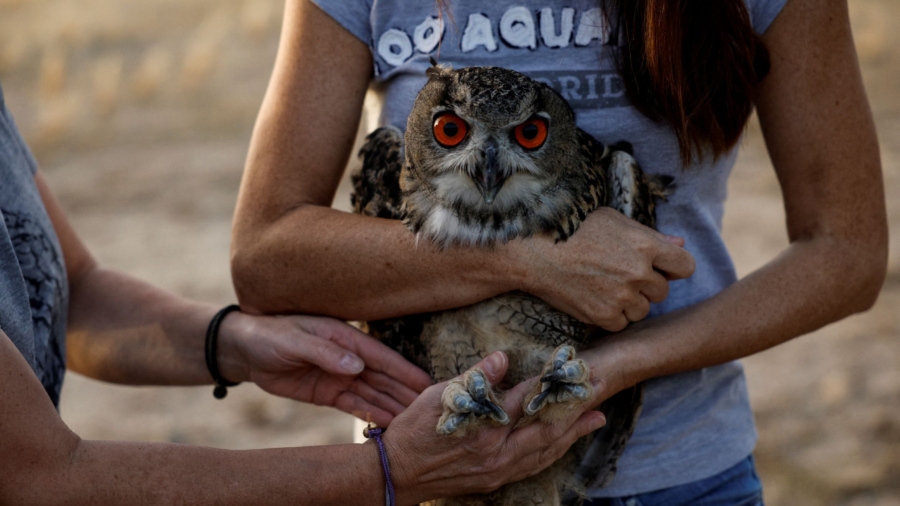MADRID— Two twin eagle owls have been released into the Madrid countryside after being born in captivity in the city zoo and undergoing months of training.
The release, which took place in the town of Villamantilla, 40 kilometers west of Madrid, is part of a Madrid zoo breeding program of night birds of prey including eagle owls and barn owls. The birds born in the zoo are taken to a recovery center called “Brinzal” to get them fit for living in the wild.
Caregivers at the Brinzal train the chicks for three to four months so they gain strength and develop hunting instincts in a large aviary designed to have a similar environment to the local mountain range.
When they reach a certain weight and pass various skill tests, caregivers free the birds into the wild, where they are crucial for controlling pests.
“When you see it flying free after it was born from an egg here. You see them spread a wing or a leg from behind their mothers, how they begin to move, how they begin to fly, and all of the sudden they are set free. It is wonderful,” Madrid zoo caregiver Veronica Martinez told Reuters.
The twins were born in February at the Madrid zoo from a pair of owls which were not fit enough to live in the wild due to injuries. The twins were transferred to Brinzal in July.
Since the program started in 2017, seven eagle owls and 11 barn owls have been released.
Some owls flew back seeking shelter after losing weight and suffering from dehydration but others have adapted to the wild.
“We hear that a migratory bird like scops owls has been seen in Mauritania and we really feel satisfaction because the animal recovered so well that it followed the natural process,” Brinzal caregiver Patricia Orejas said.
By Susana Vera


